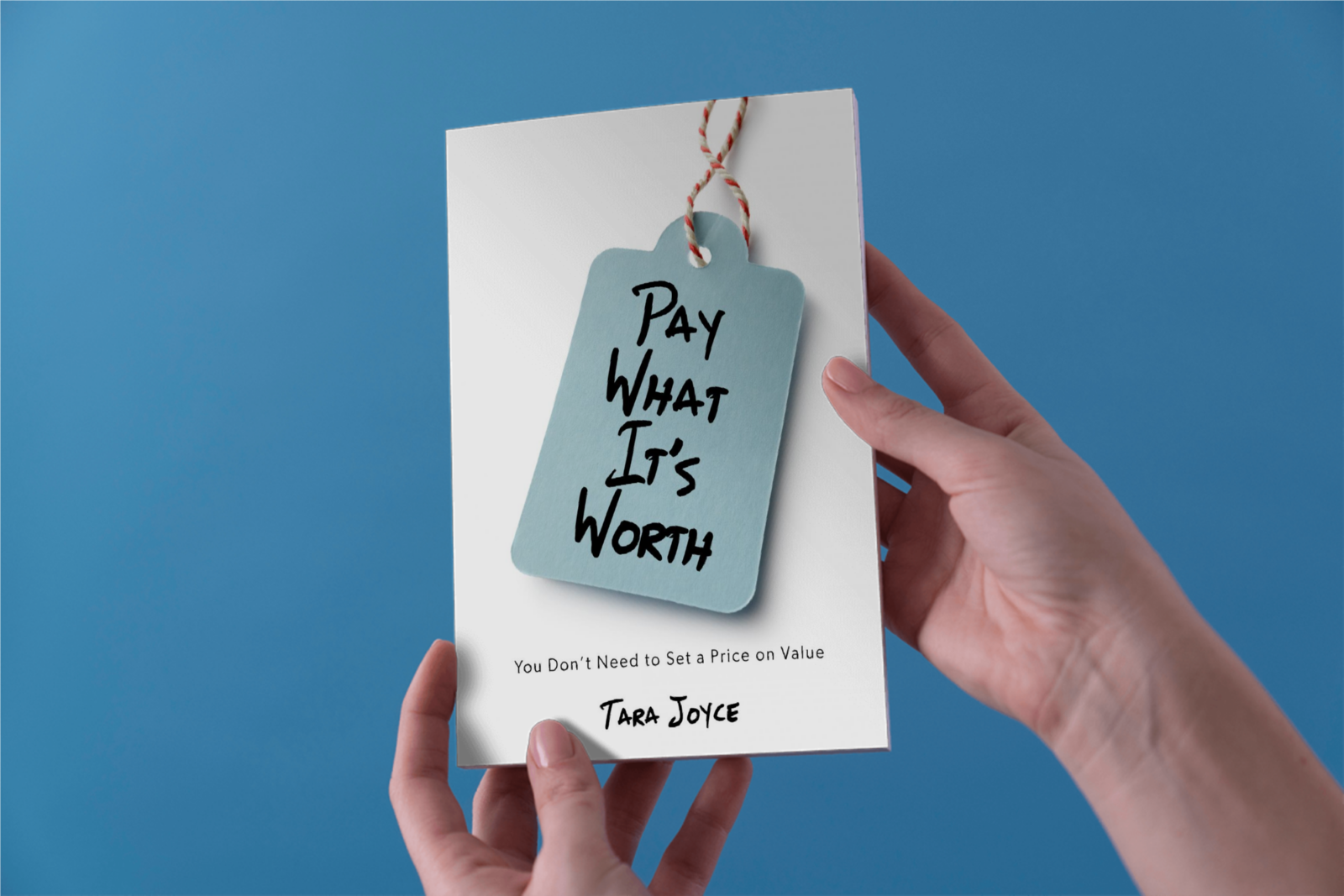
by Tara Joyce | May 21, 2014 | Cultural Creativity

Each day that I am blessed with, I’m faced with a variety of choices. Some are small, others are not. The choices I make define me and my world.
Each day I work on my resistance to creating and to sharing. For creating and sharing are choices I make that, ultimately, I am not comfortable with, though I consistently work to choose them.
To create exposes me to my own judgements, and to share exposes me to yours. And for me, both are equally terrifying.
My history had taught me that to create was not only a waste of myself, but a sure way to ensure — internal and external — criticism. The expression of me was not safe. History’s lesson, it seemed, was that my wisest choice was to hide me, to bury it by pushing it down deep and out of site.
Yet despite these learned efforts at hiding, I just can’t deny my need to create or to share. I’ve tried and I’ve failed. I’ve tried to be who I thought I needed to be, a quieter version of myself, but I can’t keep it up. I can’t be what I’m not.
No matter how I’ve tried to fight it, my need to create and my fearful choice not to affects my entire world.
With time and practice, I’ve reached a new place with my fear. I’ve now accepted it. I no longer pretend that I am bravely ignoring it, or that I can sleuth-ily avoid it, or that it’s unreasonable and untrue. My fears about creating and sharing are neither true nor false. They simply are what they are. Attaching to them won’t help or protect me.
What I need to do with my fear is use it, to allow it to support me and my heroic heart in choosing to practice the art I am so afraid of creating, and sharing.
I could do one without the other — share without creating, or create without sharing — but I know they both need to live in harmony and balance within me if I truly want to thrive.
photo credit: Funkyah

by Tara Joyce | May 7, 2014 | My Journey | What's On My Mind, Pay What It's Worth Pricing

I was all set to release my first book on Pay What It’s Worth pricing last week, a book I’ve been writing in one form or another for, I don’t know… six years or so, but life got in the way, as it does.
Life, it seems, had a bunch to teach me, and specifically about PWIW.
Life had me thinking my book was a terrible lie. And then it had me thinking that there was so much missing from it.
See, that’s my problem with Pay What It’s Worth… always has been. There’s just too much to say. And it keeps growing. And I can’t get it down fast enough before it teaches me something new.
A New Truth
I’ve always felt very strongly about the communication around Pay What It’s Worth, in that I feel strongly about the importance of how I communicate what I am asking my customers to do when I allow them to set the price they pay.
It is my feeling that to be happy in the exchange both participants need to feel empowered, and that means holding both buyer and seller responsible for their contributions to the exchange.
Last week, as a seller, it became very clear that the biggest part of my job (beyond creating value) is to guide my customers towards a fair exchange with me — to support them in being responsible with their giving and in their relationship with me.
We all have our money stuff, and in choosing a system where I allow my customers to determine my value, I am entering into a relationship with their money stuff too.
A New Block to Build From
In asking my customers to pay what it’s worth, I’m asking them to experience the value they are receiving and to give fair monetary value in return for it.
And while that sounds simple in words, it’s terribly difficult in practice. And what I haven’t been totally responsible for, I can see now as a seller (and as a writer on the topic), is the truth of this.
It’s fucking hard to stay balanced and in integrity with money. It’s fucking hard to pay what it’s worth.
The truth is, if I’m asking people and all their money stuff to value me fairly, I had better provide ample support and understanding. Because what I am really asking is for them to be in a balanced relationship with me.
Is it fair of me to expect that they know what this looks or feels like? Especially in a “business” relationship?
Support for Giving Freely
Our relationship is not one where the customer gets to pay what they want. In offering that, I’d be creating a relationship where they’re free to put their money stuff on me, and I’m free to put my money stuff on them.
The intention for our exchange is empowerment and wealth creation. It’s not about want, it’s about meeting needs and exchanging fair value.
If I want this intention of need and fair value to stay true throughout my exchanges, I need to ensure all my guideposts indicate this. In my offering of paying what it’s worth, I need to ensure that I’m not creating space for my customers to default to paying what they want.
It’s important I protect myself from how easy it is, when our money stuff arrives, to make it about want.
As a seller it’s imperative I continue to do what I can to guide my customers towards being responsible in how they value me. This, it seems, is my biggest responsibility in our exchange outside of providing great value.
If I sincerely want our exchange to be about what we both can give, I need to acknowledge how hard that can be to act on. Only in my acceptance of this can I help my customers to be responsible to it.
photo credit: Kaytee Riek

by Tara Joyce | Apr 25, 2014 | Pay What It's Worth Pricing

Some customers pay less; some customers pay more.
Some customers pay less and buy more; while some customers pay more and buy less.
Some customers appreciate more; some customers appreciate less.
Some customers appreciate more and share you less; while some customers appreciate less and share you more.
Whatever their way of expressing it, they’re happily choosing the experience and to share their satisfaction.
They’re actively valuing what they love.
And the monetary value of this love and word-of-mouth is something truly hard to measure.
I’m super duper excited to share with you that I’ve completed my first book on Pay What It’s Worth pricing! The Ingredients of Integrity: Strategies for Building Your Pay What It’s Worth Pricing System will be available for purchase on my site next week.
photo credit: katsrcool

by Tara Joyce | Mar 31, 2014 | Personal Branding

It’s a table for two.
In the end, it’s just me and you.
I need to connect with you. You need to enjoy the experience of being with me.
It’s you I need to tune into, and turn on.
It doesn’t matter what we’re talking about, business or personal.
Us humans, we connect one-on-one. Me and you.
If you feel excited and passionate about what I give you, you will help broadcast my signal.
If I connect with you, if I genuinely help you to fill a need, you will share what I do, and who I am.
The experience of me stays with you.
photo credit: Benoxi

by Tara Joyce | Mar 24, 2014 | Cultural Creativity

I like to write about our Values, our Worldviews, and the Subcultures we inhabit — but I don’t think I’ve ever clearly explained why, have I?
Maybe I’ve never written about it clearly before because it hasn’t been clear to me why it really matters until now.
Having knowledge about these topics is a business owner’s secret weapon. For they determine what and why we buy.
They’re psychographics and they explore an individual’s concepts of the world they live in. Demographics don’t have a chance against these bad boys.
Can I Get a Definition?
We use a lot of words every day. And many words — words that I use and you use — mean different things to me than they do to you.
For that reason, I feel like I always liked definitions as I often find myself asking, “yes, but what does that word really mean?”
What are Values?
Values are what’s important in your life (your life priorities). Values are what you actually do, accomplish and be.
You live your values. Each of us commits our actions in pursuit of the important matters in our lives.
Your “individual character” is built around your deeply held values and the meanings and worldviews associated with them.
Values determine how and if you will vote, what products and services you will buy, how you live, and what kind of future you want for yourself and your loved ones.
What are Worldviews?
Worldviews are your set of beliefs about “how things work”, “how life is” and “what’s objectively important in life”. It’s your perspective, your point-of-view on life.
An interesting thing about your worldview is that the more you believe that your worldview defines you, the tighter you grasp onto it’s truth.
Your worldview can be your pain and it can be your peace.
What are Subcultures?
Subcultures are a cultural group (e.g., the Cultural Creatives) within a larger culture (e.g., Canadian culture), often having values and lifestyles alternative from those of the dominate culture.
Dr. Paul Ray (who wrote The Cultural Creatives) observed that there are three major subcultures in the Western World — the Moderns, the Traditionals and the Cultural Creatives.
Everyone within these subcultural groups shares similar values, worldviews and lifestyles and these things define their actions far more than any other subculture they may belong to, including their Ethnic subculture.
Psychographics – what and why we buy
A powerful thing about psychographics is that, as a business owner, the more you work on your own understanding of your values, your worldviews and what subcultures you connect with, the stronger your understanding of your customer’s psychographics will be.
A more empathetic understanding of what and why you buy can help you more authentically understand and connect with the buying motivations of your customers.
And the best part is you may just find that you know your customers far better than you think you do, and that they value, view and live in the world very similarly to you.
photo credit: illuminaut










